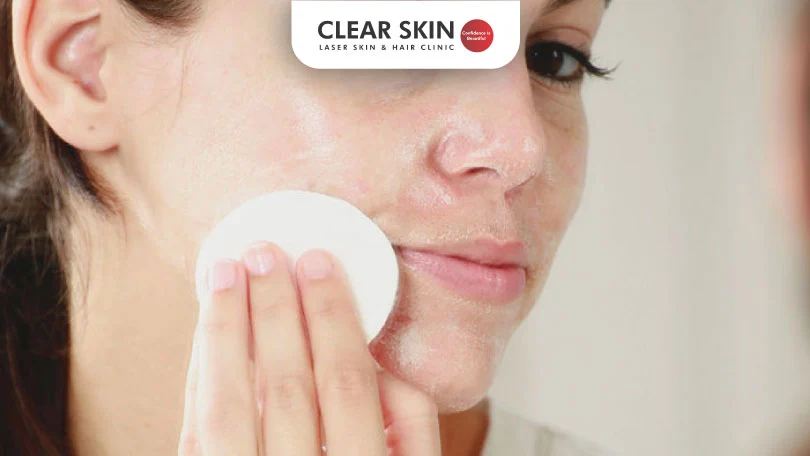Glycolic Acid for Acne Scars: Benefits & Affect
Reviewed By: Dr. Dhananjay Chavan
Updated on: 11th September, 2024

Glycolic acid has become a popular ingredient in skincare routines, known for its potential to improve skin texture and appearance. As a healthcare professional, understanding glycolic acid’s role in managing skin concerns such as acne scars can be invaluable for advising patients. This article delves into the scientific aspects of glycolic acid and offers practical advice on its usage, tailored to an Indian audience.
Table Of Content
- What is Glycolic Acid?
- How Glycolic Acid Compares to Other AHAs
- How Glycolic Acid Affects Acne Scars
- Integrating Glycolic Acid into Your Skincare Routine
- Side Effects of Glycolic Acid
- Myths and Facts about Glycolic Acid
- Conclusion
What is Glycolic Acid?
Glycolic acid is an alpha-hydroxy acid (AHA) derived from sugarcane. It is renowned for its small molecular structure, which enables it to penetrate the skin easily. As an exfoliating agent, glycolic acid gently removes the outer layer of dead skin cells, revealing smoother and healthier skin beneath. This process aids in accelerating skin renewal, promoting new skin cell growth, and thus imparting a brighter, more youthful appearance.
History of Glycolic Acid in Skincare
Glycolic acid, part of the broader family of AHAs, has been used in skincare for decades. Originating from the ancient beauty rituals where natural fruits and milk were employed for their skin-renewing properties, glycolic acid has evolved into a key ingredient in modern dermatology. Its ability to deliver effective exfoliation with minimal irritation has made it a staple in both professional treatments and at-home skincare products.
How Glycolic Acid Compares to Other AHAs
In the realm of alpha-hydroxy acids, glycolic acid stands out due to its small molecular size, allowing deeper penetration and more effective exfoliation. While other AHAs like lactic acid and citric acid also offer exfoliating benefits, glycolic acid is often preferred for its potency and ability to address both pigmentation and texture issues. However, those with sensitive skin might opt for milder AHAs like lactic acid to minimize irritation.
How Glycolic Acid Affects Acne Scars
Pigmented Scars:
These scars often appear as red or brown marks. Glycolic acid helps lighten these scars by accelerating the removal of pigmented dead skin cells and encouraging the growth of new, non-pigmented cells.Textural Scars:
Characterized by indentations or raised areas on the skin, these scars can be improved with glycolic acid through its ability to stimulate collagen production. This leads to firmer and smoother skin over time.Integrating Glycolic Acid into Your Skincare Routine
Cleansing:
Begin with a gentle, hydrating cleanser to prepare your skin without causing irritation.Toning:
Consider using a mild toner to balance the skin’s pH and enhance the absorption of subsequent products.Moisturizing:
Apply a moisturizer to lock in hydration and bolster the skin’s barrier.Application:
Use glycolic acid products available in serums, creams, or cleansers. Start with a lower concentration (5-10%) to allow the skin to adapt.Patch Test:
Always perform a patch test before full application.Sun Protection:
Use broad-spectrum sunscreen during the day, as glycolic acid can increase sun sensitivity.Side Effects of Glycolic Acid
While generally safe, glycolic acid can cause mild irritation, redness, or dryness, especially if used in high concentrations. If severe reactions occur, discontinue use and consult a dermatologist near you immediately.
Myths and Facts about Glycolic Acid
- Myth: Glycolic acid is only suitable for oily skin.
- Fact: It can benefit all skin types when used correctly.
- Myth: It causes the skin to thin.
- Fact: Glycolic acid can actually strengthen the skin by stimulating collagen production.
- Myth: Higher concentrations yield faster results.
Fact: Higher concentrations can lead to irritation; it’s best to start with a lower concentration.
Do You Know?
Roughly 250 Patients Are Treated
Everyday By These Dermatologists
(You are one click away from flawless skin)
Meet Our Dermatologist!
Conclusion
Glycolic acid can be an effective component of skincare, particularly for managing acne scars. It requires patience and consistent use for noticeable improvements. Always remember to perform a patch test and consult with a dermatologist at Clear Skin Clinic before beginning any new skincare product. By understanding and respecting your skin’s needs, you can achieve healthier and more radiant skin, making glycolic acid a valuable tool in your skincare arsenal.
For further skincare tips and advice, subscribe to our newsletter and stay informed on the latest in health and beauty. Stay healthy and glowing!
Further Reading
Do Acne Scar Removal Creams Really Work?
Discover do acne scar removal creams really work. Learn about the best ingredients and treatments to fade acne scars at Clear Skin Pune
Acne Pustules: How to Get Rid of Pustules?
Learn about causes, symptoms, and treatments from Dr. Dhanraj Chavan.
Is Tretinoin Cream Safe for Melasma? Tips and Usage Guide
Discover how tretinoin cream can safely treat melasma.
Unveiling the Potential of Face Packs for Acne Scars
Discover how homemade and customized face packs can help lighten acne marks and rejuvenate your skin.
Have thoughts? Please let us know
We are committed not only to treating you, but also educating you.






